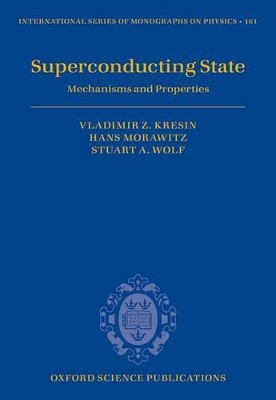International Series of Monographs on Physics
2 primary works
Book 84
Mechanisms of Conventional and High Tc Superconductivity
by Vladimir Z. Kresin, H Morawitz, and Stuart A. Wolf
Published 1 January 1993
Superconductivity has become one of the most intensely studied physical phenomena of our times, with tremendous potential to revolutionize fields as diverse as computing and transportation. This book describes the methods, established results, and recent advances in the field. The goal is to present recently developed theoretical models in light of the long-sought aim of achieving the effect at very high temperatures. The book includes a detailed review of various
mechanisms, including phononic, magnetic, and electronic models. The authors focus on the phenomenon of induced superconductivity in the high-temperature oxides, particularly the high-transition-temperature cuprates. They also discuss a variety of low-temperature superconducting systems in
conventional materials and organics. The book links the crucial experiments with the most current theories, offering a unified description of the phenomenon. All researchers (and graduate-level) students involved with work in superconductivity will find this an invaluable resource, including solid-state and condensed-matter physicists and chemists, and materials scientists.
mechanisms, including phononic, magnetic, and electronic models. The authors focus on the phenomenon of induced superconductivity in the high-temperature oxides, particularly the high-transition-temperature cuprates. They also discuss a variety of low-temperature superconducting systems in
conventional materials and organics. The book links the crucial experiments with the most current theories, offering a unified description of the phenomenon. All researchers (and graduate-level) students involved with work in superconductivity will find this an invaluable resource, including solid-state and condensed-matter physicists and chemists, and materials scientists.
Book 161
Superconducting State
by Vladimir Z. Kresin, Hans Morawitz, and Stuart A. Wolf
Published 14 November 2013
'Superconducting State' provides a very detailed theoretical treatment of the key mechanisms of superconductivity, including the current state of the art (phonons, magnons, and plasmons). A very complete description is given of the electron-phonon mechanism responsible for superconductivity in the majority of superconducting systems, and the history of its development, as well as a detailed description of the key experimental techniques used to study the
superconducting state and determine the mechanisms. In addition, there are chapters describing the discovery and properties of the key superconducting compounds that are of the most interest for science, and applications including a special chapter on the cuprate superconductors. It provides detailed treatments
of some very novel aspects of superconductivity, including multiple bands (gaps), the "pseudogap" state, novel isotope effects beyond BCS, and induced superconductivity.
superconducting state and determine the mechanisms. In addition, there are chapters describing the discovery and properties of the key superconducting compounds that are of the most interest for science, and applications including a special chapter on the cuprate superconductors. It provides detailed treatments
of some very novel aspects of superconductivity, including multiple bands (gaps), the "pseudogap" state, novel isotope effects beyond BCS, and induced superconductivity.

